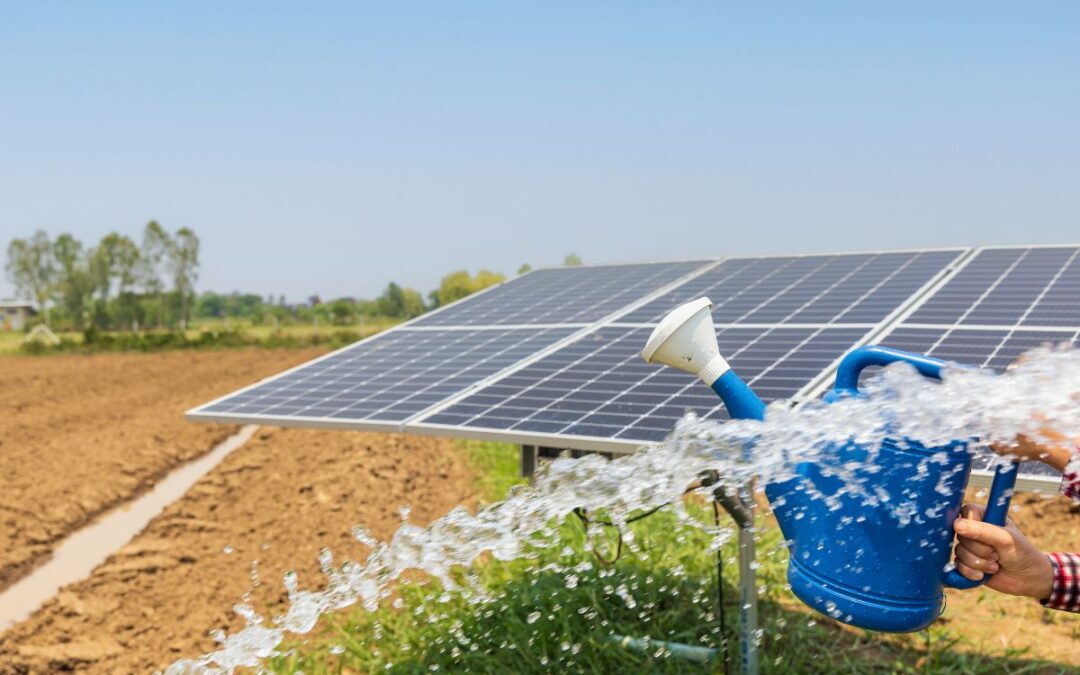Rural communities in Bangladesh have long grappled with energy poverty, hindering their socio-economic development. The lack of reliable and affordable electricity has constrained progress in education and healthcare.
Solar power is emerging as a powerful solution, promising to illuminate these remote areas, empowering rural communities, and opening doors to sustainable development. Harnessing the abundant sunshine in Bangladesh, this renewable energy is a beacon of hope for rural livelihoods.
Energy Poverty in Rural Bangladesh
Energy poverty, defined as a lack of access to modern energy services, has long been a significant hurdle for rural development in Bangladesh. According to World Bank estimates, as of 2021, approximately 30% of Bangladesh’s population, mostly in rural areas, lacked access to electricity. This has profound implications, stifling growth and limiting opportunities.
Essential services such as healthcare and education are severely constrained without reliable electricity. Clinics struggle to store vaccines or run essential diagnostic equipment, while schools often lack basic lighting, reducing study hours and impacting education outcomes. Small businesses and farms lack the power for modern equipment, curbing productivity and economic growth.
The Government of Bangladesh has made efforts to address these challenges. The Bangladesh Power Development Board (BPDB) has extended the grid to 80% of the population by 2021. However, rural areas still have limited access, particularly in the rugged terrains of the Hill Tracts and on remote islands (chars).
Moreover, grid-connected areas frequently suffer from power outages and inconsistent supply. Therefore, it became apparent that alternative, more localised solutions were needed for these rural communities.
Solar Power: An Alternative Solution
Solar power emerged as an alternative solution to address Bangladesh’s rural energy poverty around the early 2000s. NGOs like Grameen Shakti and Infrastructure Development Company Limited (IDCOL) played pivotal roles in introducing and popularising solar home systems (SHS). These are small, stand-alone systems consisting of a solar panel, a battery, and a charge controller, providing a reliable source of electricity to rural households.
As of 2021, IDCOL reported that over 6 million SHS have been installed, reaching an estimated 20 million people in off-grid rural areas. This is a significant achievement, considering there were only about 25,000 systems in 2004.
Solar power presents numerous benefits that make it highly suitable for rural Bangladesh. The most important is its ability to provide electricity in off-grid areas, overcoming the geographical barriers that make traditional grid extension costly and impractical. Solar power systems are also modular, allowing for scalable solutions based on individual household or community needs.
Furthermore, Bangladesh receives an average of 5-6 hours of sunlight daily, making solar a consistent and reliable energy source. The country’s flat topography also facilitates the installation of solar panels. Moreover, solar power is a clean, renewable energy source that aligns with Bangladesh’s commitment to reducing greenhouse gas emissions as part of global climate change mitigation efforts.
Solar power systems have proven to be a job creator in terms of socio-economic benefits. IDCOL estimates that the SHS program has generated approximately 115,000 direct jobs and 50,000 indirect jobs as of 2021. These range from manufacturing and installing solar panels to maintaining systems and collecting payments, contributing to the rural economy.
Adoption of Solar Power
The adoption of solar power in rural Bangladesh has been a collaborative effort involving multiple stakeholders, including the government, international organisations, NGOs, and local communities.
The most common model for solar power implementation has been the Solar Home System (SHS), which consists of a solar panel, battery, and charge controller that can power low-energy devices such as LED lights and small electronics.
These systems are often financed through microcredit schemes offered by NGOs, such as Grameen Shakti and BRAC, allowing households to pay off the system over several years.
In terms of process, the first step often involves awareness campaigns and educational programs to inform rural communities about the benefits of solar power.
Local technicians are then trained in installing, maintaining, and troubleshooting these systems, providing employment opportunities and ensuring the project’s sustainability.
The adoption of solar power is not limited to individual households.
Solar mini-grids are also being implemented, with a more extensive solar system shared among several households or an entire village. Similarly, solar irrigation pumps provide farmers with a reliable and clean power source for agricultural activities.
Local communities play a critical role in this process. In addition to being end-users, they are often involved in planning, decision-making, and implementation. For example, Village Solar Committees are set up to manage mini-grid systems, and local women are trained as solar technicians, helping to maintain the systems and earning an income in the process.
As of 2022, the Infrastructure Development Company Limited (IDCOL), the primary government body overseeing renewable energy initiatives, reports that over 6 million SHSs have been installed, and more than 700 solar irrigation pumps and 30 mini-grids are operational. They estimate that these systems collectively reduce CO2 emissions by about 1 million tons annually, contributing to climate change mitigation efforts.
Transformation in Rural Communities
Solar power has undeniably transformed rural communities in Bangladesh, driving numerous socio-economic changes.
In education, solar power has extended study hours for students, particularly in the evenings. Schools have been able to integrate technology in classrooms, facilitating digital learning. According to a UNESCO report, over 20,000 off-grid schools in Bangladesh are now powered by solar energy, enhancing the educational experience for millions of students.
Healthcare services have seen similar improvements. Clinics in remote areas can now store vaccines and operate essential diagnostic equipment, contributing to improved public health outcomes. As per the Ministry of Health and Family Welfare, Bangladesh, approximately 2,000 healthcare facilities were solar-powered as of 2022.
Livelihood opportunities have expanded too. Solar-powered irrigation systems enable farmers to increase crop yields and reduce dependency on diesel pumps. According to a 2022 Food and Agriculture Organization report, solar-powered irrigation systems serve about 28% of Bangladesh’s irrigated land, supporting food security and rural incomes.
Households with solar systems have also engaged in home-based businesses such as tailoring or handicrafts that require electric equipment, leading to increased incomes. A 2022 study by BRAC showed that households with solar power saw an average income increase of 10-20%.
Women, in particular, have been empowered by solar power. Grameen Shakti, one of Bangladesh’s largest NGOs involved in solar energy, reported that they had trained over 30,000 women as solar technicians, providing them with income-generating opportunities.
Overall, adopting solar power contributes to rural development, improves living standards, and offers sustainable solutions to long-standing challenges.
Challenges and Solutions
While solar power holds great promise for rural Bangladesh, its adoption is not without challenges. One significant obstacle is the initial cost of solar systems, which can be prohibitive for many rural households.
Despite financing schemes, some families still struggle to afford these systems. A 2022 study by IDCOL found that around 25% of rural households who could benefit from solar power could not afford microcredit payments.
Maintaining solar systems, particularly the batteries, is another issue. These batteries often have a shorter lifespan than solar panels and require replacing every few years, adding to the overall cost. Furthermore, lacking trained technicians in some areas can make repairs and maintenance difficult.
Lastly, awareness remains a challenge. Many rural households are unaware of solar power’s benefits, financial support availability, and how to operate and maintain the systems.
However, potential solutions exist. To address the cost issue, subsidies or targeted financial support could be provided to the most vulnerable households. Expanding the microcredit schemes and making the terms more flexible could also help.
For maintenance, more extensive training programs for local technicians could be rolled out, and mobile maintenance services could be introduced in remote areas.
Finally, awareness campaigns could be intensified, using local languages and cultural contexts to communicate solar power’s benefits effectively. These could be run through schools, community centres, and religious institutions, ensuring they reach the widest audience.
Collaborating with local leaders and influencers could also increase trust and uptake.
While these challenges are significant, they are not insurmountable. Solar power can reach its full potential in rural Bangladesh with concerted effort and innovative solutions.
Case Studies
Numerous success stories testify to the transformative power of solar energy in rural Bangladesh.
- 1. Kutubdia Island: Located in Cox’s Bazar District, this remote island is home to about 150,000 people without access to the national grid. In 2018, a solar mini-grid project was initiated by IDCOL, which now powers about 2,500 households, businesses, and community facilities. The project has lit up the island and created job opportunities. The island’s residents now enjoy extended working hours, leading to increased income, while schools and healthcare centres have improved services.
- 2. Sundarbans: The world’s largest mangrove forest, home to several off-grid communities, has significantly transformed due to solar power. NGOs like Grameen Shakti have installed thousands of SHS in the area, enabling residents to replace kerosene lamps with clean solar energy. A 2020 study found that this shift led to better educational outcomes for children and increased income for families who could work longer and save money on kerosene.
- 3. The Solar Irrigation Revolution in Barind: Barind, a drought-prone region, has seen solar-powered irrigation revolutionise agriculture. The “Solar Pump Irrigators’ Cooperative Enterprise” model, introduced by the International Water Management Institute, operates solar irrigation pumps owned and managed by farmer cooperatives. This has reduced the cost of irrigation by 30%, increased crop yields, and provided farmers with additional income from selling excess solar power back to the grid.
These success stories, among many others, demonstrate the potential of solar power to improve lives, boost income, and promote sustainable development in rural Bangladesh.
Conclusion
Solar power has proven to be a game-changer for rural development in Bangladesh. Its potential to alleviate energy poverty, empower communities, enhance local economies, and drive sustainable development cannot be overstated.
From schools and healthcare facilities to farms and households, solar power has ignited a wave of positive change across rural areas.
The prospects of solar power in Bangladesh look promising. As the country enjoys abundant sunlight, the potential to harness this resource is vast. With the Government of Bangladesh committing to increase its share of renewable energy to 40% by 2041, solar power’s role is expected to grow exponentially.
There are plans to expand solar energy beyond lighting, including solar irrigation pumps, solar-run small industries, and solar-powered transportation. The rise of technology such as battery storage and mini-grids, also opens new avenues for more extensive solar power deployment.
Despite the challenges – financial constraints, maintenance issues, and the need for widespread awareness – the success so far points to a bright future for solar power in Bangladesh. With the right policies, continued investment, and community involvement, the nation is well on its way to transforming its energy landscape, powering rural development, and contributing to global renewable energy goals.

